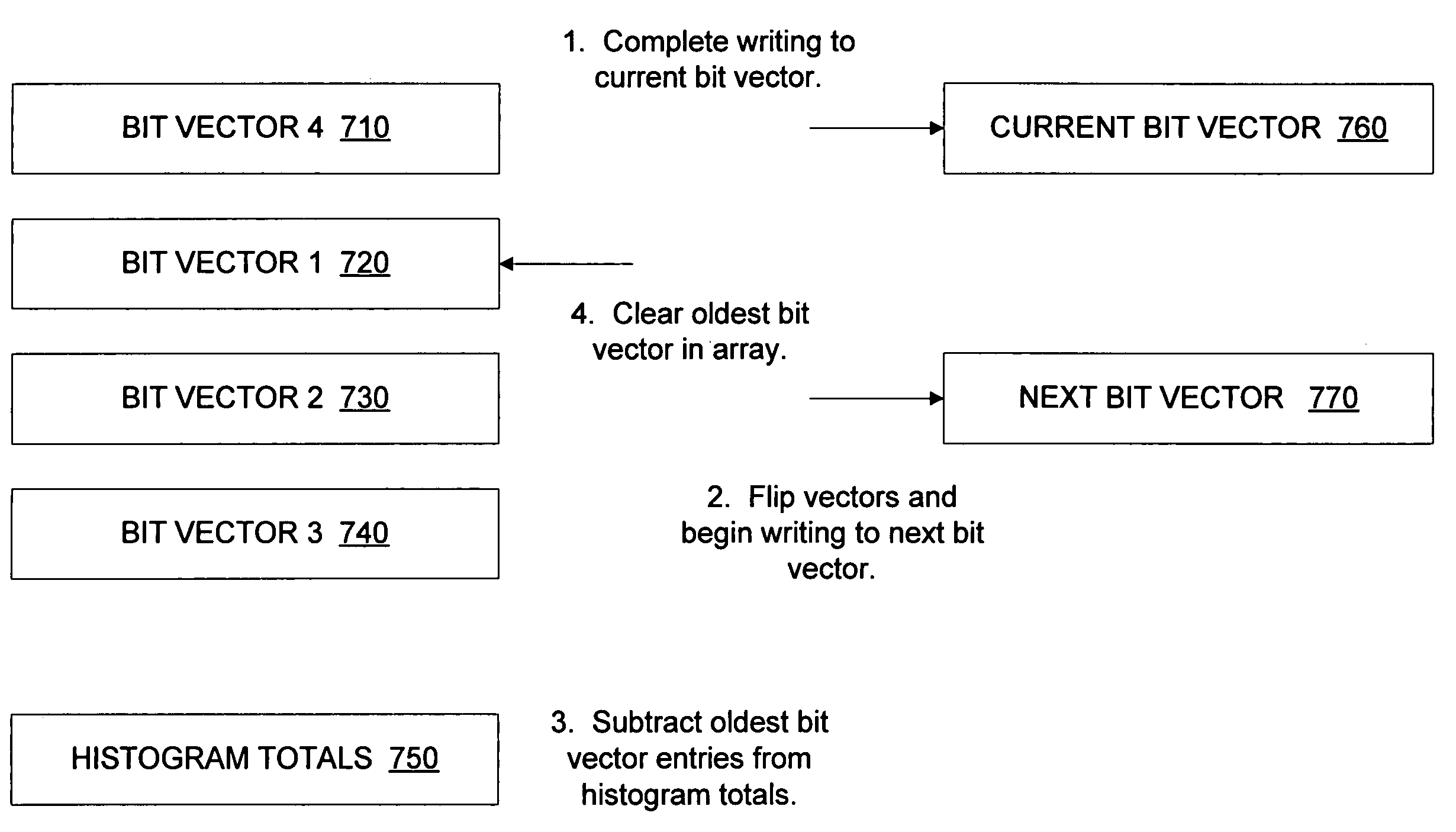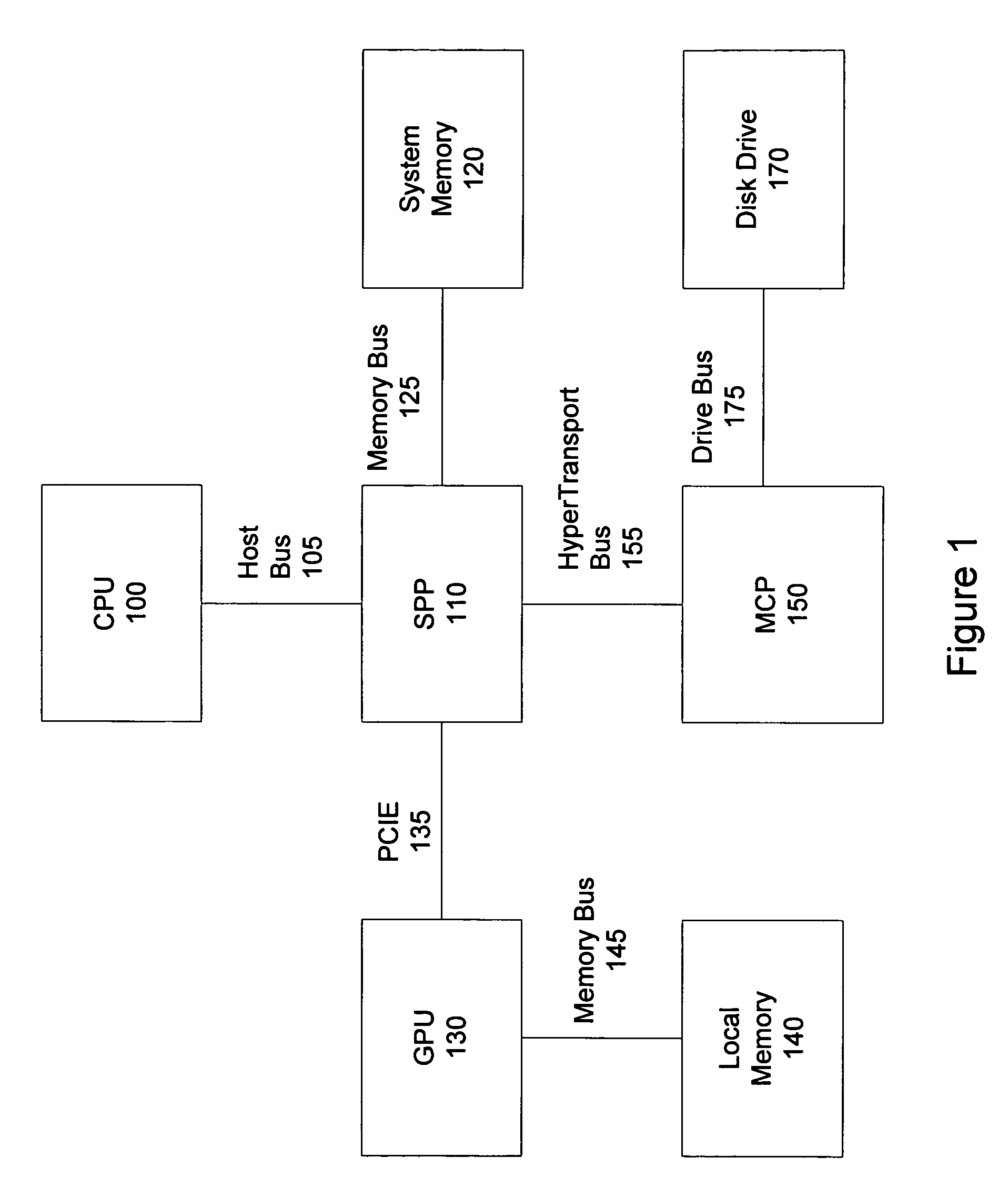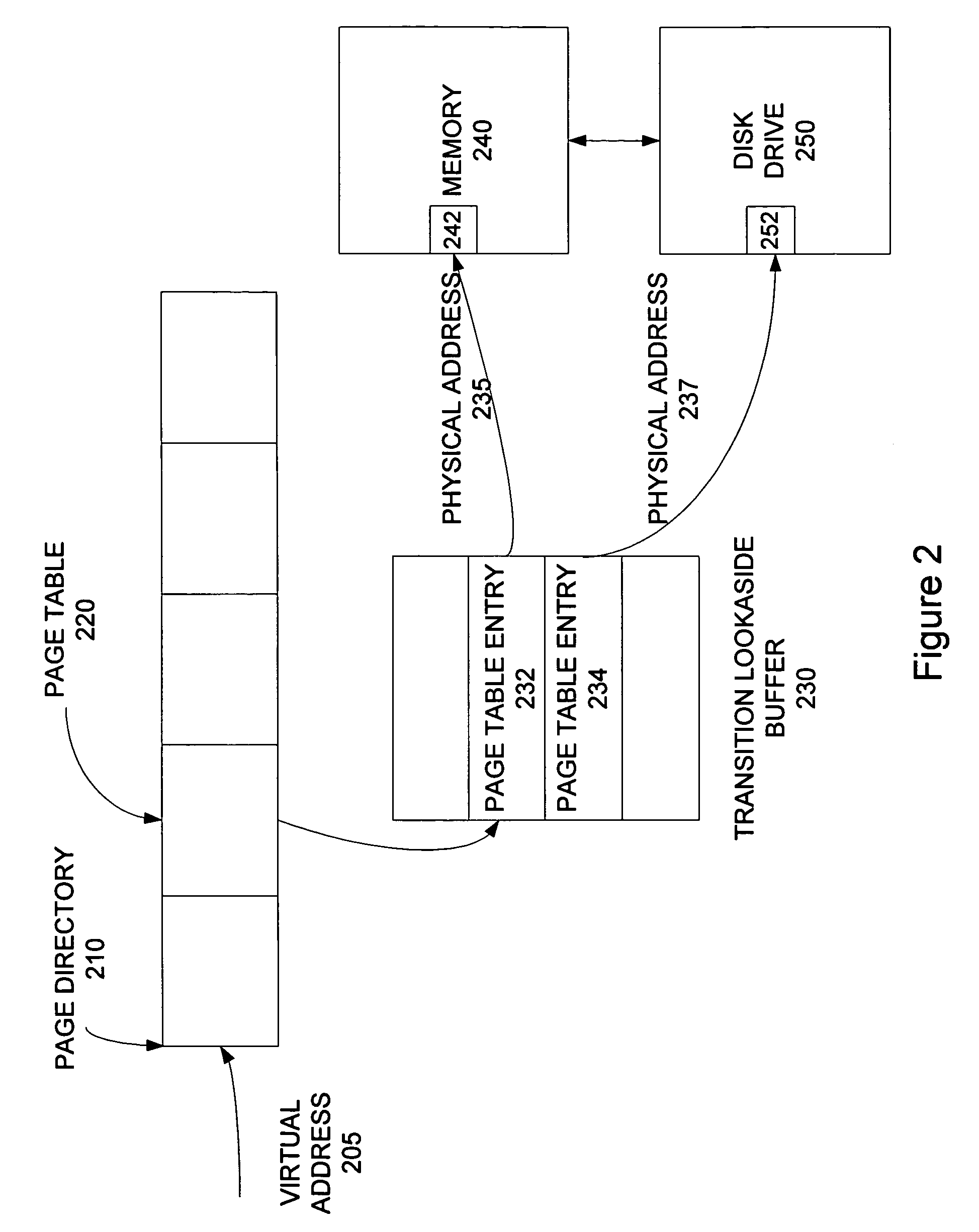Physically-based page characterization data
a physical-based, page-based technology, applied in the field of memory management, can solve the problems of slowness of data storage, inability to efficiently store page characteristics, and inability to meet the needs of applications, and achieve the effect of efficient storage of page characteristics
- Summary
- Abstract
- Description
- Claims
- Application Information
AI Technical Summary
Benefits of technology
Problems solved by technology
Method used
Image
Examples
Embodiment Construction
[0023]FIG. 1 is a block diagram of a computing system that is improved by incorporating an embodiment of the present invention. This block diagram includes a central processing unit (CPU) or host processor 100, system platform processor (SPP) 110, system memory 120, graphics processing unit (GPU) 130, frame buffer, local, or graphics memory 140, MCP 150, and hard disk drive 170.
[0024]The CPU 100 connects to the SPP 110 over the host bus 105. The SPP 110 is in communication with the graphics processing unit 130 over an advanced graphics port (AGP) or peripheral component interconnect express (PCIE) bus 135. The SPP 110 reads and writes data to and from the system memory 120 over the memory bus 125. The MCP 150 communicates with the SPP 110 via a high-speed connection such as a HyperTransport bus 155, and connects network and internal and peripheral devices (not shown) as well as hard disk drive 170 to the remainder of the computer system. The graphics processing unit 130 receives dat...
PUM
 Login to View More
Login to View More Abstract
Description
Claims
Application Information
 Login to View More
Login to View More - R&D
- Intellectual Property
- Life Sciences
- Materials
- Tech Scout
- Unparalleled Data Quality
- Higher Quality Content
- 60% Fewer Hallucinations
Browse by: Latest US Patents, China's latest patents, Technical Efficacy Thesaurus, Application Domain, Technology Topic, Popular Technical Reports.
© 2025 PatSnap. All rights reserved.Legal|Privacy policy|Modern Slavery Act Transparency Statement|Sitemap|About US| Contact US: help@patsnap.com



